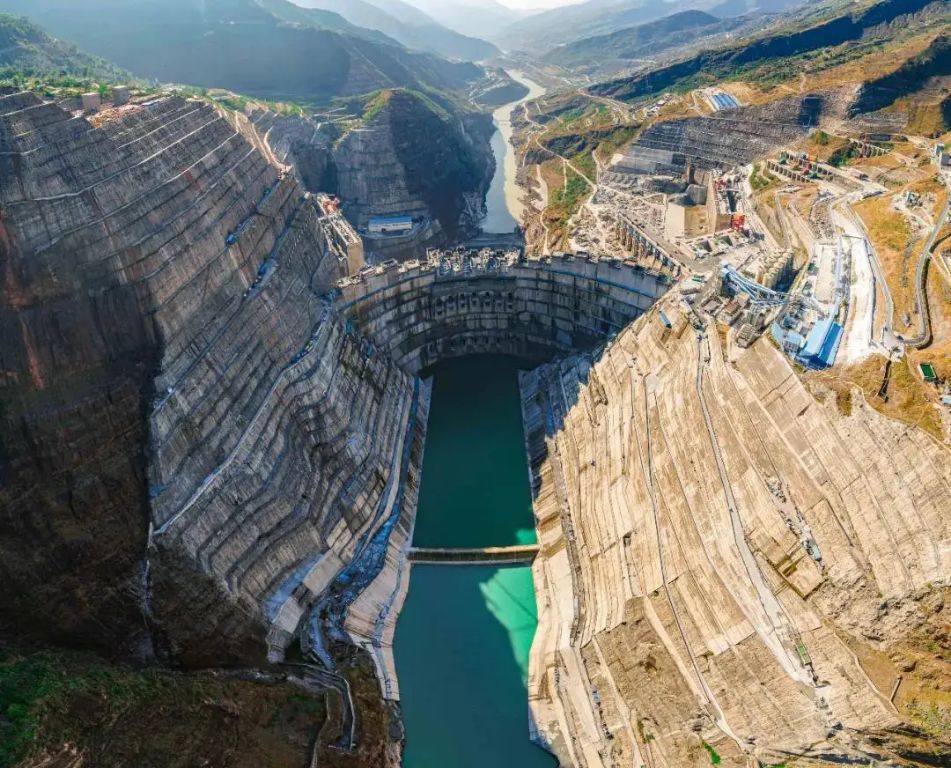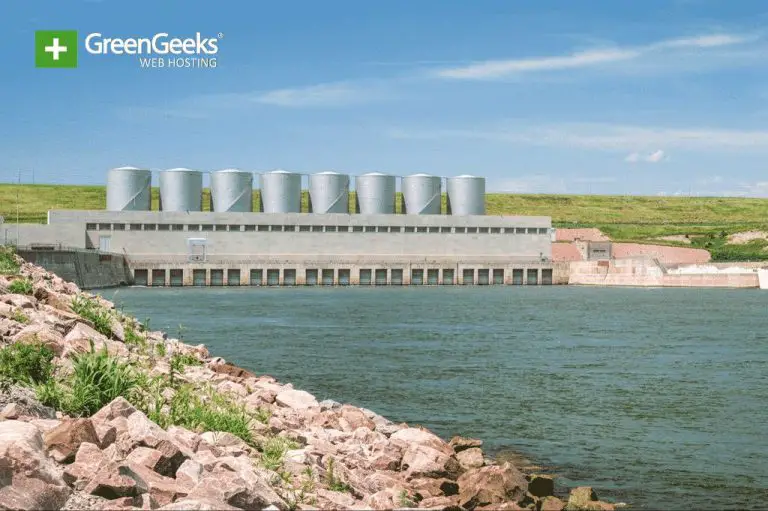What Is The Largest Dam Under Construction In China?
China is currently building the Baihetan Dam on the Jinsha River in southwest China’s Sichuan Province and Yunnan Province. When completed, it will be the largest hydroelectric dam in the world by installed capacity. This content will provide an overview of the Baihetan Dam project, including its specifications, construction timeline, challenges, purpose, benefits, controversies, and comparisons to other major dams in China and worldwide.
The main points that will be covered are the dam’s size and generating capacity, the phases of its construction, obstacles faced in building such a massive structure, its intended role in China’s energy infrastructure and economy, debates surrounding the environmental and social impacts, and how it compares to giants like the Three Gorges Dam in terms of scale and significance. By the end, readers will have a comprehensive understanding of this record-breaking hydro project and its implications.
Overview of the Baihetan Dam
The Baihetan Dam is a massive hydroelectric dam located on the Jinsha River in southwest China on the border between Sichuan and Yunnan provinces (wikipedia.org). At 16,000 megawatts, it will be the second largest hydro station in China once operational.
The main purpose of the Baihetan Dam is hydroelectric power generation. It is part of China’s west-to-east power transmission plan to deliver electricity to the populous eastern provinces. The dam will provide much needed power to drive industrial and economic growth in the region (power-technology.com).
Some key facts about the Baihetan Dam:
- It has a height of 289 m, making it the world’s third tallest arch dam.
- The dam’s reservoir has a total capacity of 20.6 billion m3.
- It will house 16 x 1,000 MW hydroelectric generating units.
- Construction began in 2008 and is expected to be finished in 2022.
Dam Specifications
The Baihetan Dam is located on the Jinsha River, which is the upper section of the Yangtze River in southwest China. It is a double-curvature concrete arch dam with a height of 289 meters, making it the second tallest arch dam in the world after the Jinping I Dam. According to Wikipedia (https://en.wikipedia.org/wiki/Baihetan_Dam), the dam has a crest elevation of 827 meters, a width of 72 meters at the base, and a width of 13 meters at the crest.

The dam’s reservoir will have a total capacity of 15.73 billion cubic meters, of which 9.65 billion is active (or useful) storage. There will be 16 Francis turbine-generators installed with a total capacity of 16,000 megawatts (MW), making it the world’s second largest hydroelectric power station after the Three Gorges Dam in terms of installed capacity. The project is expected to generate over 62.4 billion kilowatt-hours of electricity annually.
According to Power Technology (https://www.power-technology.com/projects/baihetan-hydropower-project-china/), the dam’s spillway has a maximum discharge capacity of 19,200 cubic meters per second and there are two surface powerhouses, one on each bank of the river.
Construction Timeline
Construction on the Baihetan Dam officially began in December 2017, according to Wikipedia. The massive project has moved swiftly, with the first two turbine generator units beginning operations in June 2021, just 3.5 years after construction started. As of September 2022, 10 units are now operating at the dam, generating over 16 gigawatts of power. The Baihetan Hydropower Station is expected to be fully operational by July 2022, meaning the entire dam will be constructed in less than 5 years. This exceptionally fast timeline is a testament to the scale and efficiency of the project.
Construction Challenges
Building a massive dam like the Baihetan comes with many construction challenges. According to a paper presented at the ICOLD Congress, some of the key difficulties faced while constructing the Baihetan Dam were related to the unique geography of the area and the immense size of the project (https://www.cbip.org/ISRM-2022/ICOLD2021/Data/Themes/3-Advances%20in%20Dam%20Safety,Risk%20Assessment%20and%20Management/3-11%20Pro%202020.pdf).
The dam site is located in a remote area with complex terrain. Transporting equipment and materials to the construction site was extremely difficult given the lack of infrastructure in the region. Constructing roads and bridges to improve accessibility to the site was a major undertaking.
The sheer size and scale of the Baihetan Dam also posed engineering challenges. The project required innovative solutions and construction techniques to build such a massive arch dam on the Jinsha River. Some of the difficulties included developing durable, high-strength concrete mixes for the dam structure and managing the enormous amounts of concrete and aggregate needed for construction.
According to media reports, the project team also faced challenges dealing with complicated geological conditions at the site. Overcoming weak areas and fractures in the riverbed foundation required advanced engineering and targeted strengthening of the underlying rock (https://www.globaltimes.cn/page/202106/1227437.shtml).
In summary, transporting materials, developing specialized concrete mixes, managing enormous scale, and addressing complex geological issues were some of the major difficulties overcome while constructing the record-breaking Baihetan Dam.
Environmental Impact
The Baihetan Dam is predicted to have significant impacts on local wildlife, ecosystems, and communities along the Jinsha River. Construction of the dam and the resulting reservoir has flooded around 300 square kilometers of land, submerging habitats and vegetation (https://www.mdpi.com/2073-4441/14/17/2694). This will likely lead to reductions in biodiversity and disruptions to wildlife migration patterns. Several endangered or threatened species live in the area, including the Chinese sturgeon, Chinese paddlefish, Chinese giant salamander, snub-nosed monkeys, and black-necked cranes. Their habitats and food sources are being destroyed by the project. There are also concerns about the barrier effect the dam will create for fish migration (https://www.globaltimes.cn/page/202107/1227798.shtml?id=11).
In terms of effects on local communities, over 100,000 people have been relocated for dam construction. This displacement and loss of farmland has disrupted rural livelihoods and traditional cultures dependent on the river. Plans to mitigate ecological impacts have faced criticism as inadequate. More comprehensive environmental impact assessments and protections for endangered species will be needed to reduce harm from the project (https://www.sciencedirect.com/science/article/pii/S1569843222003454).
Purpose and Benefits
The Baihetan Dam is primarily intended to generate hydroelectric power and to control flooding on the Jinsha River. The 16 gigawatt hydroelectric plant will be able to generate over 62 billion kilowatt-hours of electricity per year [1]. This is enough to meet the annual electricity needs of approximately 5 million households.
The electricity generated by the dam will help meet China’s growing energy demands and reduce reliance on fossil fuels, supporting the country’s goal to reach peak carbon emissions by 2030. Large-scale hydroelectric projects like Baihetan are key to China’s clean energy transition and efforts to combat climate change [2].
In addition to generating renewable energy, the dam and its reservoir will provide flood control and water storage benefits in the Jinsha River basin. Regulating water flows can help mitigate costly flood damage downstream.
The Baihetan hydropower station benefits China by advancing national development goals and providing clean electricity to power homes and industry. The dam’s capabilities also benefit local communities by regulating river flows and reducing flood risks.
Controversies
The Baihetan dam has faced criticism and controversy since its inception. Environmental groups have raised concerns about the dam’s impact on biodiversity and displacement of local communities. According to Radio Free Asia, over 100,000 local residents, mostly from the relatively poor Yi nationality, have been forced to relocate due to the dam’s massive flooding area.
There are also concerns that the dam will disrupt the flow of the Jinsha River, impacting ecosystems and fish populations downstream. Some experts believe the dam’s enormous size and capacity could allow China greater control over water resources flowing to lower Mekong countries like Thailand, Laos, Cambodia and Vietnam.
Within China, there has been criticism over the large-scale forced relocations. Authorities have allegedly threatened and arrested people who refused to relocate. Compensation for displaced residents has been considered inadequate by some rights groups. There are also outstanding concerns about the safety risks of building such a massive dam on the Jinsha River.
Comparisons to Other Dams
The Baihetan Dam is currently the second largest hydroelectric dam in the world, behind only the Three Gorges Dam in terms of installed capacity. At 16,000 megawatts, the Baihetan Dam has around half the capacity of the 22,500 megawatt Three Gorges Dam [1]. However, in terms of physical size, Baihetan is actually larger than Three Gorges, with a dam wall stretching over 2,335 meters compared to 2,309 meters for Three Gorges [2].
Some other comparisons: Baihetan generates over triple the power of the famous Hoover Dam in the United States, which has a capacity of 2,080 megawatts. The Itaipu Dam on the Brazil/Paraguay border is the second largest operating hydroelectric facility in terms of annual generation, producing around 103 TWh annually compared to Baihetan’s expected 84 TWh per year [3]. Overall, Baihetan represents a massive hydroelectric engineering project that cements China’s status as a world leader in megadam construction.
Conclusion
The Baihetan dam is undoubtedly an engineering marvel that will provide important benefits to China. With 16 million kilowatts of power generation capacity, it will be a major source of renewable hydroelectric energy for the country. The dam’s massive size, with a width of 1,100 ft and height of 1,000 ft, makes it one of the largest infrastructure projects in the world today.
However, a project of this scale inevitably comes with major environmental and social impacts. Over 27,000 people needed to be relocated to make way for the dam’s reservoir. Flooding of the Jinsha river valley also threatens rare species and pristine ecosystems. While measures have been taken to mitigate the damage, it is still substantial.
On balance, the Baihetan hydropower station will likely bring more prosperity through its electricity production and economic stimulus than drawbacks. But its full legacy will only be clear in time after operations begin and impacts are fully realized. The project highlights the difficult trade-offs China faces in powering its rapid growth while minimizing harm to people displaced and environments disrupted in the process.





